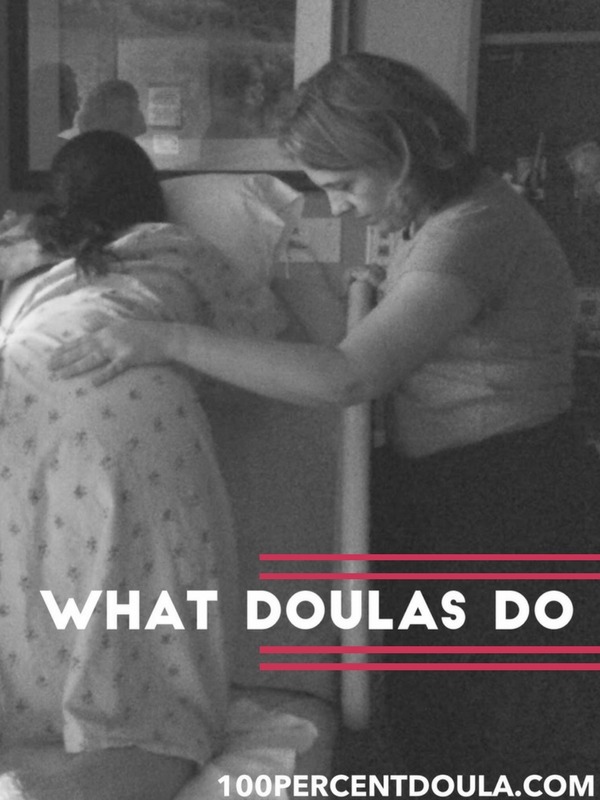
Even after we’ve been hired some of our clients may not really know what doulas actually do. I believe the best time to walk through this is at the first prenatal meeting. That way, while you are learning about your client’s preferences and vision of an ideal birth, your client can be learning about what you do and the limitations of your role. If you’ve heard the saying, “Expectation is the root of all heartache”, you’ll understand what I’m trying to guard against. Some clients picture their doula as a safety net against unwanted medical interventions, like a charm that will defeat the 80% C-section rate at their chosen hospital. While doulas are certainly powerful and can be instrumental in nurturing positive birth experiences, we are not magic and can neither guarantee ideal birth outcomes nor prevent bad things from happening during labor. From the outset, we need to set realistic expectations about our power. A great way to do that is to talk about the specific things a doula does. I like to break it down as follows:
THINGS THAT I LIKELY WILL DO
• Help create an ideal birth environment. – Examples include playing the client’s music, lowering lights, adjusting the temperature or making sure curtains are pulled for privacy.
• Help with coping techniques.
• Suggest position changes.
• Remind the client to go to the bathroom.
• Refill the client’s water bottle and bring them ice.
• Support their partner. – I might bring them water or encourage them to sleep, rest, get a snack or maybe take a quick break outside.
• Take photos (if desired).
• Discuss options. – During the course of the birth experience, there are times the client will need to make decisions. I’m going to help them discuss their options and share any information I might have about the risks or benefits of the choices before them.
• Help facilitate communication among the team. – If the client’s team is communicating well and working cohesively, fantastic. However, if that’s not the case, I might, for example, encourage the client to ask the nurse a question or express a concern that they have with their care.
• Treat care providers with respect. – As a doula I have experienced everything from a warm welcome to hostility from care providers. Regardless of the nature of my reception, I will always be respectful to the care provider and the whole team in general.
• Briefly chat with the midwife/OB after the birth. – I let my clients know that as a part of my business it’s important that I maintain good relationships with the care providers with whom I work. So after the baby is born and I’m sure everybody is doing well, I will slip out after the care provider and have a brief chat in the hallway to connect. A heads up will reassure the client that, when this happens, it is purely about developing my business relationship and not about excluding the client from a conversation concerning them.
• Keep their preferences top of mind. – At all times I am trying to help them achieve their birth preferences.
SELF CARE
In addition to the steps I take to serve the client, it’s important to identify the things that I will likely do to take care of myself. By addressing my own needs for nourishment or rest, I will be better able to perform as their support person. These little breaks are also a good opportunity for our clients to have some alone time.
• Fill up my own water bottle.
• Eat a snack from my bag.
• Take a break for a meal outside the room.
• Quickly check my phone. – I may have family obligations or other clients that need my attention from time to time.
• Sleep when everyone else is sleeping.
When it comes to self care, some doula’s feel guilty attending to their own needs. Again, it is about setting expectations. If you tell the client that you may leave the labor room for a quick meal, then when it happens, they will be prepared for it. If you have a special circumstance that requires short absences, don’t hesitate to be upfront about them at the outset. For example, for many years I was a breastfeeding mom and would need to take 15-20 minutes breaks every three hours or so to pump. At the first prenatal, I would let my clients know this time frame so I would not feel guilty when I left to honor these needs. Putting off your self care does not serve your client, it undermines your ability to function at your best.
HOLDING THE SPACE
I also always make sure to tell the client that when everything is going well, I will sit quietly. At these times it may look like I’m doing nothing, but I’m always thinking about what’s going on. I’m making sure the environment is set up correctly, keeping track of when the client went to the bathroom last, checking on the water bottle, checking on the partner’s needs, monitoring contractions, breathing, coping, timing for medical procedures, etc. I’m not going to be inserting myself simply to look like I’m doing something, but I am holding the space and making sure I’m there if needed.
—————
For more information about what do include in a prenatal meeting, check out our online course Master the Doula Prenatal.
